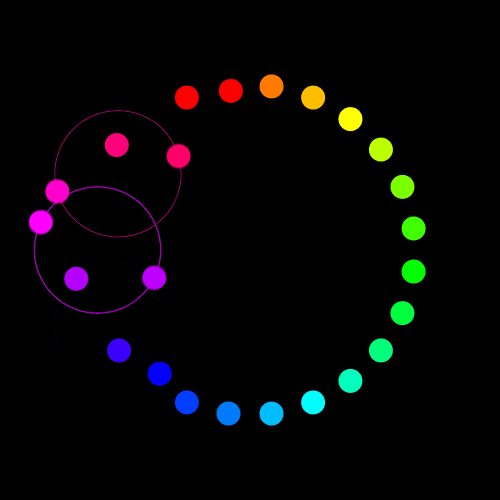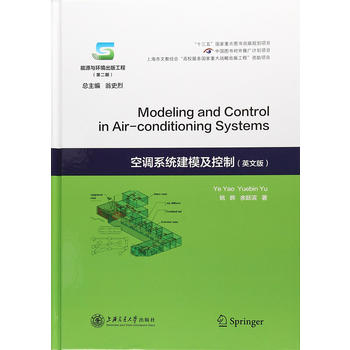简介
《空调系统建模及控制(英文版)》主要内容包括:集中空调系统状态空间建模原理、过程及图论描述方法,空调系统中传感器虚拟标定技术及虚拟传感器模型,双环路模型预测控制模型,空调负荷组合预测模型,空调系统能量评价分析模型,空气处理单元机群(AHUs)协同控制模型,以及基于负荷预测的空调系统全局优化节能控制模型。
《空调系统建模及控制(英文版)》内容新颖且信息量大,注重于计算机仿真与实验相结合以及理论分析和应用实例相结合,是一本建筑环境与设备工程和自动控制学科深度交叉、系统反映新成果的难得的参考书。
《空调系统建模及控制(英文版)》可供从事建筑环境与设备工程、热能工程、制冷与低温工程、自动控制工程以及相关专业的本科生和研究生参考使用,也可作为从事相关领域研究的科研人员的参考用书。
目录
1 Introduction
1.1 Background
1.2 Modeling Approaches in HVAC Field
1.2.1 Physics-Based Modeling Approach
1.2.2 Data-Driven Modeling Approach
1.2.3 Hybrid Modeling Approach
1.3 Proposed Methods
1.3.1 State-Space Modeling
1.3.2 Graph-Theory Modeling
1.3.3 Combined Forecasting Modeling
1.3.4 Decomposition-Coordination Algorithm for Global Optimization Model
1.3.5 Virtual Calibration for HVAC Sensors
1.3.6 Model-Based Predictive Control (MPC)
1.4 Organization of This Book
References
2 Component Modeling with State-Space Method
2.1 Basic Knowledge about State-Space Modeling Method
2.2 Modeling for HVAC Components
2.2.1 Water-to-Air Heat Exchanger
2.2.2 Chiller
2.2.3 Cooling Tower
2.2.4 Duct (Pipe) and Fan (Pump)
2.2.5 Air-Conditioned Room Modeling
2.3 Modeling for HVAC System
2.3.1 Component Model Connection
2.3.2 State-Space Representation for HVAC System
2.3.3 Case Study
References
3 Dynamic Simulations with State-Space Models
3.1 On Water-to-Air Surface Heat Exchanger
3.1.1 Subjected to Different Perturbations
3.1.2 For Different Initial Conditions
3.2 On Chiller
3.2.1 Subjected to Different Perturbations
3.2.2 For Different Initial Conditions
3.3 On Cooling Tower
3.3.1 Subjected to Different Perturbations
3.3.2 For Different Initial Conditions
3.4 On Duct and Pipe
3.4.1 On Straight-Through Duct
3.4.2 On Straight-Through Pipe
3.5 On Air-Conditioned Room
3.5.1 Basic Conditions
3.5.2 Subjected to Different Perturbations
4 Graph-Theory Modeling and Structure-Matrix Analysis
4.1 Graph-Theory Modeling for HVAC Component State-Space Models
4.1.1 Fundamental Rules
4.1.2 Case Study
4.2 Graph-Theory Modeling for HVAC System
4.2.1 Basic Method
4.2.2 Case Study
4.3 Structure-Matrix Analysis Approach
4.3.1 Model Structural Matrix
4.3.2 Reachability Analysis of Model Input-Output
4.3.3 Controllability/Observability Analysis of Model
4.3.4 Case Study
References
5 Virtual Measurement Modeling
5.1 Virtual Calibration
5.1.1 Conventional Calibration
5.1.2 Methodology of Virtual In Situ Calibration
5.1.3 Case Study
5.2 Virtual Sensing
5.2.1 Development Methodology for Virtual Sensing
5.2.2 Case Study
5.2.3 Model Development
References
6 Control Design Based on State-Space Model
6.1 Model-Based Predictive Control (MPC)
6.1.1 Introduction of MPC
6.1.2 MPC in Broad Definition
6.2 Applications of MPC in HVAC Field
6.2.1 Control of a Hybrid Ventilation Unit
6.2.2 Control of Space Thermal Conditioning
6.3 State-Space Feedback Control System Design
6.3.1 Basic Principle
6.3.2 Control System Design for Water-to-Air Heat Exchanger
6.3.3 MATLAB Simulation of the Control System
6.3.4 Control System Design for Refrigeration System
References
7 Combined Forecasting Models for Air-Conditioning
Load Prediction
7.1 Typical Methods
7.1.1 MLR Modeling
7.1.2 ARIMA Modeling
7.1.3 GM Modeling
7.1.4 ANN Modeling
7.2 Combined Forecasting Model Based on Analytic Hierarchy Process (AHP)
7.2.1 Principles of the Combined Forecasting Method
7.2.2 Determining Weights by Analytic Hierarchy Process (AHP)
7.2.3 Combined Forecasting Model for Hourly Cooling Load Prediction Using AHP
7.3 Forecasting Model Based on Neural Network and Combined Residual Error Correction
7.3.1 Model Development
7.3.2 Case Study
References
8 Energy Analysis Model for HVAC System
8.1 Energy Models for HVAC Components
8.1.1 Chiller
8.1.2 Boiler
8.1.3 Pump and Fan
8.1.4 Cooling Tower
8.1.5 Water-to-Air Heat Exchanger
8.2 Energy-Saving Analysis on VAV Air-Conditioning System
8.2.1 Evaluation Program for Energy Saving of VAV System
8.2.2 Case Study
8.3 Energy Analysis on VAV Air-Conditioning System with Different Air-Side Economizers
8.3.1 Scheme for Air Economizer Cycle
8.3.2 Case Study
References
9 Optimal Control of HVAC System Aiming at Energy Conservation
9.1 Air-Side Synergic Control
9.1.1 Background and Basic Idea
9.1.2 Mathematic Deduction of Synergic Control Model
9.1.3 Control Logic Details
9.1.4 Case Study
9.2 Global Optimization Control
9.2.1 Model Development
9.2.2 Decomposition-Coordination Algorithm for Model Solution
9.2.3 Case Study
Appendix
References
10 Modeling and Control Strategies for VAV Systems
10.1 Background and Research Status
10.2 Modular Modeling with Simulink Tool
10.3 Model Library for Components of VAV System
10.3.1 VAV Terminal Unit
10.3.2 Variable Speed Fan
10.3.3 Air Ducts
10.3.4 Other Local Resistance Components
10.3.5 Application of Component Model Library: Case Study
10.4 Control Strategies for VAV System
10.4.1 Constant Static Pressure Method
10.4.2 Total Air Volume Method
10.4.3 Variable Static Pressure Method Based on Trim-and-Respond Logic
10.5 Control Sequences for VAV System with Different Terminal Units
10.5.1 For Cooling-Only Terminal Unit
10.5.2 For Reheat Terminal Unit
10.5.3 For Series Fan-Powered Terminal Unit
10.6 Test Script for VAV Control Study
10.6.1 Preparation
10.6.2 General Inspection of Air-Handling and Distribution System
10.6.3 Trend Data Review
References
空调系统建模及控制
- 名称
- 类型
- 大小
光盘服务联系方式: 020-38250260 客服QQ:4006604884
云图客服:
用户发送的提问,这种方式就需要有位在线客服来回答用户的问题,这种 就属于对话式的,问题是这种提问是否需要用户登录才能提问
Video Player
×
Audio Player
×
pdf Player
×



